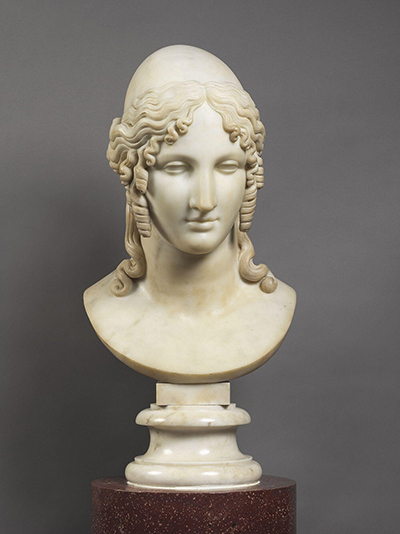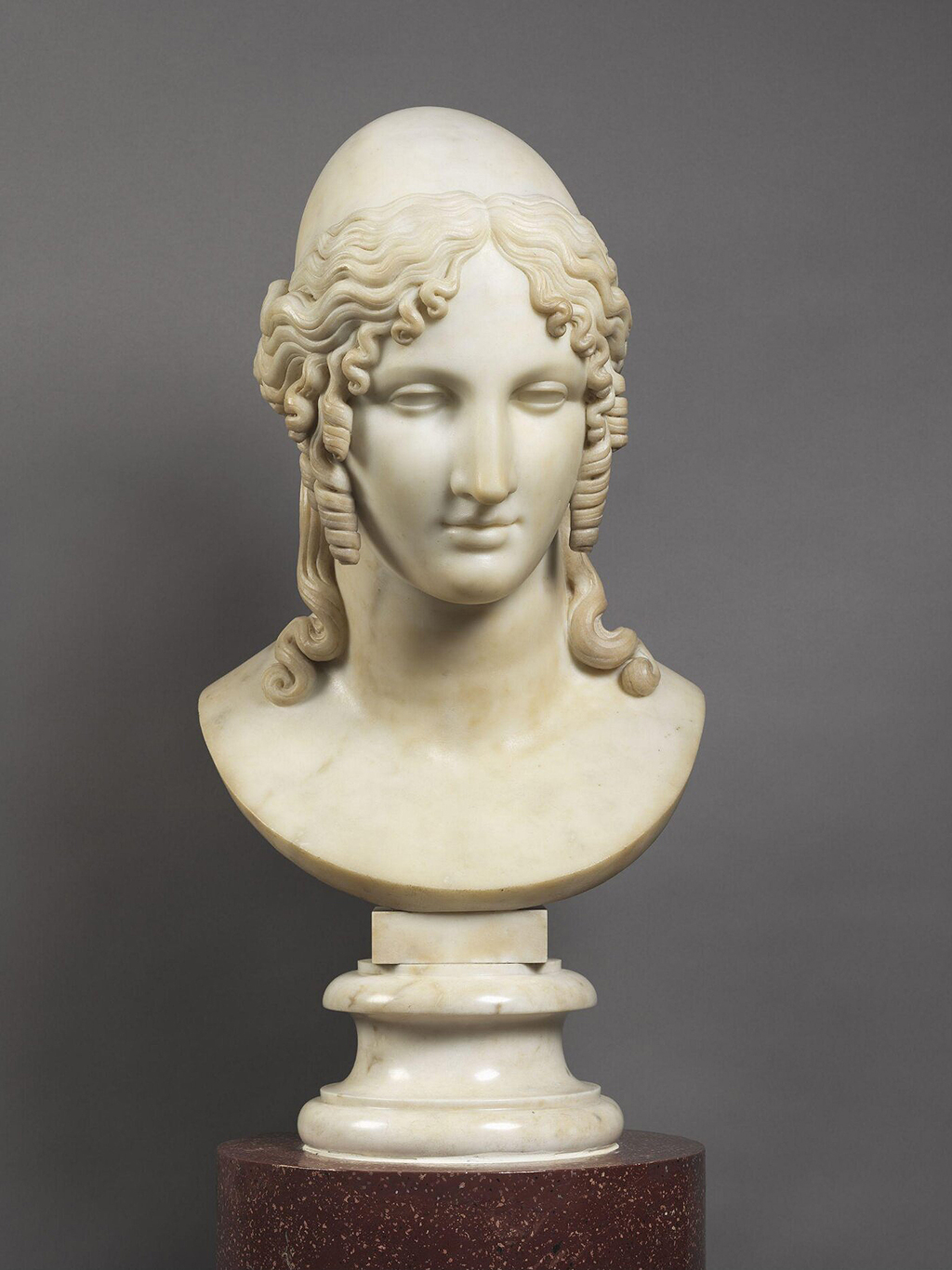Helen of Troy, famed for her beauty, is captured here by Antonio Canova in a sculptured bust from after 1812. It now resides within the impressive collection of the V&A Collection in London, UK.
Helen, daughter of Jupiter, would eventually marry Paris, a Trojan prince having earlier been abducted. This famous female figure has inspired many an artist over the centuries and most frequently during the 16th-19th century era. Her suffering would ultimately lead to war between the Greeks and Trojans, making her life particularly significant. She would become a symbol of many things, but most of all we remember her for being a sign of ultimate beauty and that was perhaps the reason behind Canova's decision to produce this piece. It is believed that Canova produced several different iterations of this bust, just as he would with many of his other sculptures. Another version, for example of Helen of Troy can be found in the Palazzo Albrizzi in Venice. Today, even his original moulds and plaster work will attract great interest and considerable valuations, such is the prominent reputation of this artist. We are even aware that famous poet Lord Byron would write about this very sculpture within a poem of his own, exclaiming its beauty and the majesty of the sculptor himself.
If we look directly at the portrait itself we have to pay attention specifically to the curls of hair which are delivered beautifully. Helen has an extended nose, perfectly straight, and small, delicate lips which are entirely feminine. The back of her head is left entirely devoid of detail, and is just left rounded, encouraging us to focus entirely on her facial features and the curls of hair which hang down to her neck. This particular version was purchased by the National Portrait Gallery in 1930 which then passed it onto to the V&A Museum, both of which are based in central London, UK. There is also another version believed to be residing within the UK, as well as the one in Venice mentioned elsewhere. The V&A holds an excellent array of sculpture within its extensive collection, making its presence here perhaps more appropriate than its former home which tends to focus more on painting instead.
Visitors to the V&A Museum will also be able to see a number of items from the career of Italian master, Donatello. This includes a whole series of original plaster casts for his work on the High Altar of the Basilica di Sant'Antonio during the mid 15th century. These were then used several centuries later to output new artworks, though they would never attain the same levels of value as anything that came directly from the master's own hands. Similarly, there are also a number of items from the career of Lorenzo Ghiberti, including his Virgin and Child and also a number of plaster casts of for the door of the Baptistry of S. Giovanni, Florence. They were then cast in bronze for the final display.





